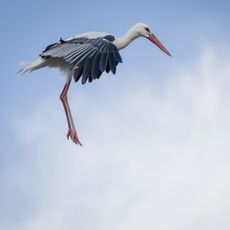Skilled artisan: Drystone Waller
A skill which is almost intuitive, building a sturdy dry stone wall is a real challenge every time


Stonewalling is like doing a jigsaw puzzle, according to some experts in Northumberland.
'You need to know your stones and you have to pick the right pieces from the pile. Each stone has to cover the join of the two beneath it.' The type of stone used ? limestone, whin, sandstone ? depends on the location not the wall and is chosen to blend in with the landscape. A good day for one man would mean completing 4-5 yards, and the average height of a wall is 4 ½ - 5 feet.
Teams use a frame to get the shape right, ensuring that the wall tapers from 24 inches wide at the bottom to 14 inches at the top. Cement is used on the top of the wall to prevent cattle knocking off the stones, but the wall's overall stability depends on the skill of the craftsmen.
Featured in Country Life's Living National Treasures, 1997
Sign up for the Country Life Newsletter
Exquisite houses, the beauty of Nature, and how to get the most from your life, straight to your inbox.
Country Life is unlike any other magazine: the only glossy weekly on the newsstand and the only magazine that has been guest-edited by HRH The King not once, but twice. It is a celebration of modern rural life and all its diverse joys and pleasures — that was first published in Queen Victoria's Diamond Jubilee year. Our eclectic mixture of witty and informative content — from the most up-to-date property news and commentary and a coveted glimpse inside some of the UK's best houses and gardens, to gardening, the arts and interior design, written by experts in their field — still cannot be found in print or online, anywhere else.
-
 A well-connected rural playground with 23 acres on the edge of the South Downs National Park
A well-connected rural playground with 23 acres on the edge of the South Downs National ParkOld House Farm is an impressive family home with a wealth of amenities that would inspire any rural passion.
By Arabella Youens Published
-
 The UK gets its first ‘European stork village’ — and it's in West Sussex
The UK gets its first ‘European stork village’ — and it's in West SussexAlthough the mortality rate among white storks can be up to 90%, the future looks rosy for breeding pairs in southern England.
By Rosie Paterson Published
